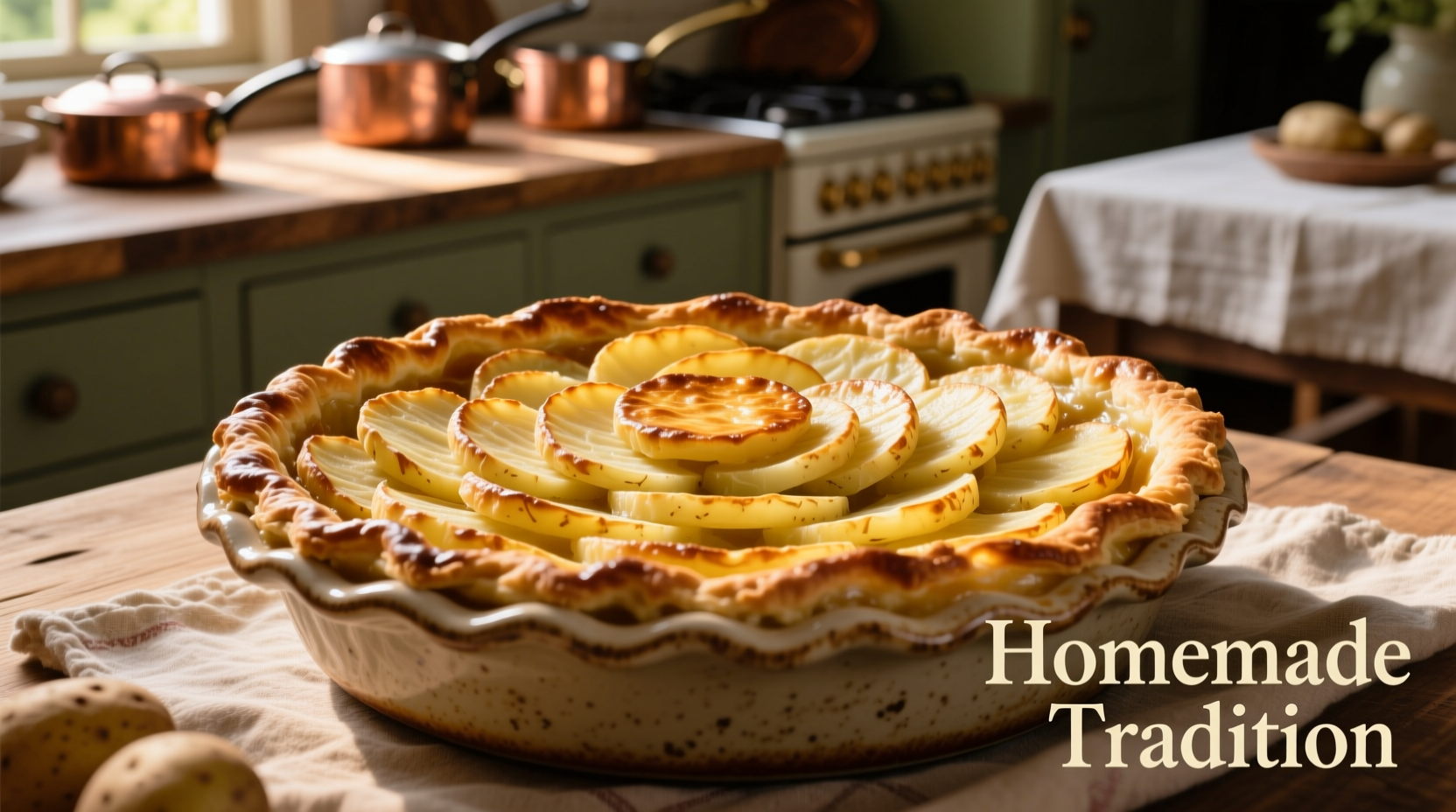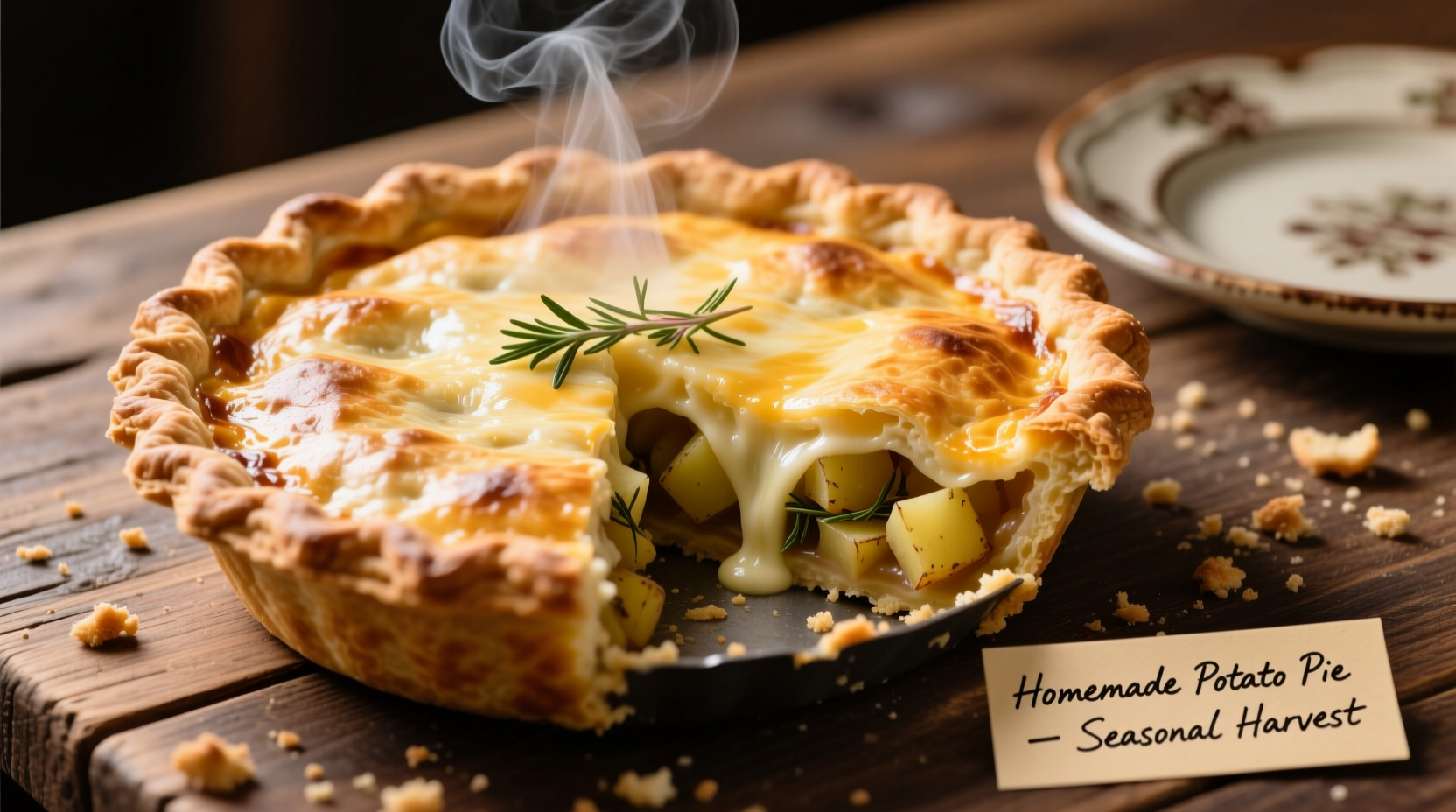What Exactly Is Potato Pie (And How It Differs From Shepherd's Pie)
Many home cooks confuse potato pie with shepherd's pie, but they're fundamentally different dishes. While shepherd's pie features mashed potatoes as both the base and topping with meat filling in between, potato pie uses thinly sliced potatoes layered throughout the dish with a distinct crispy top layer. The key difference lies in the potato preparation method and structural composition.
Historical Evolution: From European Staple to Global Comfort Food
Potato pie emerged as a practical solution for European households after potatoes became widely cultivated following their introduction from South America. Unlike shepherd's pie which appeared later as a way to use leftover roasted meats, potato pie was designed as a standalone meal where potatoes served as both the primary ingredient and structural component.
Potato Pie Historical Timeline
- 1570s: Potatoes introduced to Europe from South America
- 1700s: First documented potato pie recipes appear in British and Irish cookbooks
- 1830s: American cookbooks begin featuring regional variations
- 1880s: Industrial revolution makes potato slicing tools widely available
- 1940s: Potato pie becomes popular wartime ration-friendly meal
- Present: Global variations reflect local ingredients and culinary traditions
Regional Variations You Should Know
While the basic concept remains consistent, regional adaptations showcase remarkable diversity. These variations reflect local ingredients, cultural preferences, and historical circumstances that shaped each region's culinary identity.
| Region | Key Characteristics | Distinguishing Ingredients | Historical Context |
|---|---|---|---|
| British Isles | Thick meat filling, layered potatoes | Beef, onions, thyme | Developed as economical meal during agricultural depression |
| Eastern Europe | Thinner potato layers, sour cream topping | Pork, dill, sour cream | Adapted from traditional pierogi techniques |
| American South | Sweet potato variations, spiced meat | Smoked meats, cayenne, sweet potatoes | Blended European techniques with available ingredients |
| Latin America | Spicy fillings, cheese topping | Chorizo, aji peppers, queso fresco | Indigenous potato traditions merged with European methods |
Essential Components of Authentic Potato Pie
Creating an exceptional potato pie requires attention to three critical elements that work together to create the perfect texture and flavor balance:
1. The Potato Selection
Russet potatoes remain the gold standard for their high starch content and ability to create distinct layers that hold their shape while becoming tender. Yukon Golds work well for a creamier texture, while red potatoes maintain their shape better but don't layer as effectively. According to the USDA Agricultural Research Service, russets contain approximately 21% starch compared to 16% in Yukon Golds, making them ideal for layered preparations.
2. The Filling Foundation
A well-balanced filling provides moisture and flavor without making the pie soggy. The ideal ratio is 2 parts potatoes to 1 part filling by volume. Traditional meat fillings should be cooked down until nearly all liquid has evaporated, as excess moisture is the most common cause of structural failure in potato pie.
3. The Crispy Top Layer
What separates a good potato pie from a great one is the top layer's texture. For optimal crispness, thinly slice potatoes (1/8 inch thick), toss with a small amount of oil or melted butter, and arrange in overlapping concentric circles. This technique creates a naturally crispy topping without requiring additional breading.

Step-by-Step Preparation Guide
Follow these professional techniques to achieve perfect potato pie every time:
Preparation Essentials
- Potato slicing: Use a mandoline for consistent 1/8-inch slices (critical for even cooking)
- Filling preparation: Cook meat filling until no visible liquid remains
- Layering technique: Alternate potato layers with filling, finishing with potatoes on top
- Temperature control: Start baking at 400°F (200°C) for 20 minutes, then reduce to 350°F (175°C)
Common Mistakes to Avoid
Even experienced cooks encounter these pitfalls when preparing potato pie:
- Using waxy potatoes: Results in soggy layers that don't hold structure
- Overfilling with liquid: Causes separation and prevents proper layering
- Insufficient resting time: Cutting too soon causes structural collapse
- Inconsistent slicing: Leads to uneven cooking and texture problems
Professional chefs recommend allowing potato pie to rest for at least 15 minutes after baking. This critical step allows the layers to set properly. According to culinary research from the Institute of Food Technologists, this resting period enables starch retrogradation, which stabilizes the dish's structure.
Serving and Storage Recommendations
Potato pie serves 6-8 people and pairs beautifully with:
- Simple green salad with vinaigrette
- Crusty bread for soaking up flavorful juices
- Light-bodied red wine or crisp cider
For optimal leftovers, store in an airtight container in the refrigerator for up to 4 days. Reheat individual portions in a 350°F (175°C) oven for 20-25 minutes to maintain the crispy top layer. Avoid microwaving, which makes the potatoes soggy and destroys the textural contrast that defines a perfect potato pie.
Frequently Asked Questions
What's the difference between potato pie and shepherd's pie?
Potato pie features layered sliced potatoes throughout the dish with a distinct crispy top, while shepherd's pie uses mashed potatoes as both the base and topping with meat filling in between. The structural composition and potato preparation methods differ significantly.
Can I make potato pie ahead of time?
Yes, assemble the pie up to 24 hours in advance, cover tightly, and refrigerate. Add 15-20 minutes to the baking time if cooking from cold. For best results, add the top potato layer just before baking to maintain crispness.
Why does my potato pie fall apart when I cut it?
This usually happens when the pie hasn't rested sufficiently after baking (minimum 15 minutes), when too much liquid was in the filling, or when inconsistent potato slices were used. Proper resting allows the starches to set, creating clean slices.
Can I use sweet potatoes in potato pie?
Yes, sweet potatoes work well, particularly in Southern and Latin American variations. For best results, combine with regular potatoes (50/50 ratio) as sweet potatoes have higher moisture content and may make the pie too soft when used exclusively.
How do I prevent a soggy bottom crust?
Pre-bake the bottom potato layer for 10 minutes before adding filling, ensure your meat filling has minimal liquid, and use a metal or ceramic baking dish (avoid glass) which conducts heat more efficiently for crispier results.











 浙公网安备
33010002000092号
浙公网安备
33010002000092号 浙B2-20120091-4
浙B2-20120091-4